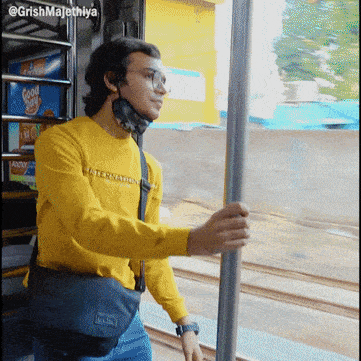- Product Monk
- Posts
- Why 1 Crore Mumbaikars Trust m-Indicator? Product-Market Fit Strategy
Why 1 Crore Mumbaikars Trust m-Indicator? Product-Market Fit Strategy
The literal textbook case of achieving product-market fit is here - m-Indicator!
Your SOC 2 Compliance Checklist from Vanta
Are you building a business? Achieving SOC 2 compliance can help you win bigger deals, enter new markets and deepen trust with your customers — but it can also cost you real time and money.
Vanta automates up to 90% of the work for SOC 2 (along with other in-demand frameworks), getting you audit-ready in weeks instead of months. Save up to 400 hours and 85% of associated costs.
Download the free checklist to learn more about the SOC 2 compliance process and the road ahead.

Read Time: 7 min | Active Subs: 32,310
Welcome to Product Monk, a 3x/week newsletter where we share the case studies of the most exciting tech products.
We wrote these three stories last week, hope you love them ❤️:
PS: Every email has a quick feedback at the bottom. Would really appreciate it if you give feedback there. Gives us a general sense of how our case studies/emails have been received and how to improve on them.
What Kind of a Product Manager Are You?
Here are the results from the previous email's (Khan Academy) quiz! Find out what kind of a PM you are!
If you chose __ in the previous post, you are:
A. Strategic Thinker: Focuses on financial viability and long-term product vision.
B. Storyteller: Emphasizes user benefit and inspires excitement around the product's impact.
Find the next quiz right below!
Would you rather ...?In the next post, I will reveal to you the kind of PM you are, based on the choice you make! Remember, no answer is right/wrong! |
Why 1 Crore Mumbaikars Trust m-Indicator? Product-Market Fit Strategy

m-Indicator is a mobile app that has revolutionized the way people commute in Mumbai, India. It provides real-time train tracking, bus schedules, and route planning, making it the go-to app for millions of daily commuters.
m-Indicator's success in Mumbai can be attributed to a textbook case of achieving product-market fit. This case study dives deeper into how the app achieved this key milestone!
Before that, did I tell you I live in Navi Mumbai? 😊

Gif by grishmajethiya on Giphy
Problems Addressed by m-Indicator
There’s a reason Mumbai’s local railways are called its “lifeline”. And when there’s a problem with something such important, it can cause good enough hurdles!
Here are the problems that m-Indicator solved for Mumbaikars:
1. Difficult access to updated transport timetables

Credits: World India News, Panvel to CST: Up and Down trip printed timetable
Imagine a sprawling megacity with thousands of trains and buses snaking through narrow streets and bustling stations. That's Mumbai's public transport system, a labyrinth for even the most seasoned commuter.
Navigating this maze with outdated paper timetables or cryptic station announcements was like playing a blindfolded puzzle; frustration and confusion were inevitable.
2. Lack of real-time updates
Crammed compartments and overflowing trains and buses were the norm, with no way to gauge how much longer the sardine-like experience would last.
The lack of real-time information left commuters in the dark, unable to plan their day effectively or make informed decisions about alternative routes.
3. Constant worry due to unpredictability

Credits: Trak.in
Commuters faced the constant fear of missing their train or bus, leading to long, anxious waits on crowded platforms.
Inaccurate schedules meant journeys could stretch into unpredictable odysseys, eating into precious hours and adding stress to everyday life.
4. A City Held Hostage
This inefficient and unpredictable system impacted not just individuals but the entire city's productivity.
Wasted time, stress, and frustration translated into lower economic output and a diminished quality of life for all.
M-Indicator as a Solution
In 2009, m-Indicator arrived, not just as an app, but as a lifesaver. Here's how it transformed the daily commute:
Live Train Tracking

Credits: UX PLanet
No more peering into the distance, hoping for a glimpse of your locomotive. m-Indicator put the train on your phone! You could see its exact location, zipping down the tracks, and its estimated arrival time at each station.
No more last-minute dashes or missed trains, replaced by the comforting certainty of knowing exactly when to be where.
Real-time Train & Bus Schedules
Gone were the days of waiting at deserted bus stops, fingers crossed and watches ticking. m-Indicator brought the buses to your phone screen, showing their location and arrival time in real-time.
Route Planning
Feeling like a tourist in your own city? No worries! m-Indicator turned Mumbai into your navigation playground.

Credits: Reliance Digital
From trains to buses, rickshaws to ferries, the app charted the fastest and most convenient route to your destination, considering every mode of transport. Gone were the days of aimlessly hopping on and off, replaced by the efficiency of a personalized travel map.
Offline Functionality
No internet? No problem! m-Indicator understood Mumbai's connectivity woes. Its offline functionality ensured you always had access to essential timetables and route information, even in the subway's depths.
This digital lifeline prevented lost commutes and ensured you reached your destination, even when the network didn't.
More than just features, m-Indicator was a revolution. It transformed the commute from a daily battle into a controlled journey. It put the power of information and planning directly in the hands of commuters, replacing uncertainty with confidence and frustration with freedom.
Challenges and Future of m-Indicator
m-Indicator has revolutionized Mumbai's commute, but the journey of progress is never-ending. Here's a deeper dive into the challenges the app faces and its exciting future possibilities:
1. Keeping real-time info accurate
Keeping real-time information accurate in a city like Mumbai, where schedules shift and routes bend with the ebb and flow of daily life, is a constant battle.
Disruptions and unexpected delays can throw a wrench in the app's precision, demanding dynamic updates and agile adaptation.
2. Building a Seamless Multimodal Experience
Mumbai's transport ecosystem is a tapestry of trains, buses, rickshaws, and beyond. Integrating all these modes into a seamless multimodal experience is the next frontier.
Imagine planning a journey that effortlessly switches between train and bus, factoring in rickshaw options for the last leg. This interconnected web would further empower commuters and reduce travel time.
3. Personalizing the Journey
m-Indicator has already made life easier, but true customization could be the secret sauce.
The app can introduce personalization by learning your preferences, suggesting alternate routes based on real-time traffic, reminding you about saved locations, and even factoring in weather conditions like monsoon delays.
This personalized touch would elevate the app from an information provider to a trusted travel companion.
Beyond these core challenges, the future holds exciting possibilities:
AI-powered insights:
Using AI to predict disruptions, personalize routes, and even suggest alternative modes of transport based on individual needs could be a game-changer.Gamification and incentives:
Encouraging responsible travel behavior through gamification and rewards for on-time arrivals or reduced carbon footprint could further enhance user engagement.Data-driven infrastructure:
Sharing real-time data with transportation authorities could help optimize schedules, improve infrastructure, and create a more efficient ecosystem for all.
m-Indicator has conquered the initial challenge, but the quest for a perfect commute continues. Overcoming these hurdles and embracing futuristic possibilities will solidify its position as the ultimate weapon in any Mumbaikar's commuting arsenal.
Key Takeaways for Product Managers
Understand user needs deeply: m-Indicator succeeds by focusing on solving real commuter problems. Prioritize and address user needs for product-market fit.
Prioritize simplicity and core features: m-Indicator's success comes from a user-friendly interface and core features. Product managers should prioritize simplicity, avoiding feature bloat.
Embrace data-driven decisions: Analyze user data for feature development and app optimization. Product managers should use insights to inform decisions and iterate based on feedback.
Focus on accessibility and affordability: Ensure wide reach by offering a free app compatible with various devices and internet access. Prioritize accessibility and affordability for growth and inclusivity.
Adapt to changing contexts: Respond proactively to evolving user needs and market conditions. Be adaptable to changes for continued success.
Build trust with accuracy: Maintain accurate real-time information to build user trust. Prioritize data quality and transparency for reliability.
Integrate new technologies: Explore AI, personalization, and multimodal travel for future app improvements. Envision and integrate innovative technologies for an enhanced user experience.
Measure broader impact: Beyond user growth, evaluate the app's impact on reducing stress and improving the commuting experience. Look beyond downloads and engagement for a comprehensive assessment.
Understand local needs: m-Indicator's success is rooted in understanding Mumbai's transport system. Prioritize local context and user research for tailored products in specific markets.
Foster continuous learning: Learn and iterate continually. Embrace a growth mindset, seek feedback, and strive for constant improvement in product development.
Your product is not for you. It's for the problems you've never faced, the lives you've never lived.
♨️ Served hot from the industry!
This section includes some relevant articles/videos, people to check out, and links you might find interesting from around Product management.
👉🏻 Product Development Cycle (Link)
👉🏻 What are Product Insights? Types, Challenges, & More (Link).
👉🏻 3 Ways to Read Your Customers' Minds (Link)
Did this edition change how you think? |



Reply